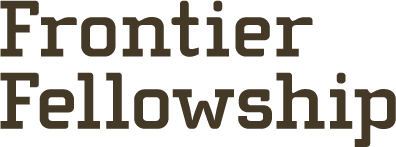Sam Cox

Sam Cox is a graphic designer and documentary maker. His work revolves around the intersection of landscape, identity and religion. A Raleigh native, Sam received his BA in graphic design from North Carolina State University and currently operates a graphic design studio called Diagram Office that focuses on maps and information design. His design worked has been featured by NPR and Fast Company Design, and has appeared in WIRED and CMYK magazines. Outside of the studio he studies and performs improv comedy.
The desert does not hide what it is. You either take it or leave it but there’s no hiding from it. I dislike the medium-ness of most towns and landscapes. Green River is anything but medium. The sparseness, space, and silence seem to match the extremities of the soul.
Jesus Christ went into the desert both to pray and to do battle with Satan. The first Christian monks fled into the desert to escape the mitigating effects of civilization and to face the demons. The Israelites spent 40 years wandering in the desert in preparation for the Promised Land. The desert is a place where powerful forces, both material and spiritual, converge. It is the original Church.
Arriving in Green River tired and burnt-out, I embraced my sojourns into the surrounding landscape as necessary anecdotes to the crushing armatures of civilization. We owe ourselves to the womb of civilization, but the womb becomes a tomb when it's time for rebirth. Out here, one can experience true silence. Once you’ve spent several hours with only the sound of blood ringing in your ears, you begin to appreciate the comforts of civilization. Maybe city life isn’t so bad?
The city is my father, the town is my sister, the land is my mother, and the canyons are my lover.
Green River locals also expressed an appreciation for the solitude and escape the land provides. Whether hunting or boating, these activities provide an outlet for transcendence from the routines of material sustenance. These two extremes—civilization and wilderness— emerged as the driving force behind my work in Green River. My time here has been focused on investigating the polarities of wilderness and civilization, and how both of these places can be experienced positively and negatively; the safety and boredom of civilization, and the peace and danger of the wild.
Notes taken during the first two weeks of the residency.
I began honing my meditations into three output streams.
A) A video collage looking at how we attempt to mitigate wilderness through civilization.
B) A symbolic sculpture representing the tension between wilderness and civilization.
C) A short documentary looking at the ways Green River locals "read" the landscape for clues and guidance.
OUTPUT STREAM A) The Cost of Civilization
The yellow and black hatched signs marking bridges and cattle gaurds quickly captured my imagination. These graphics are striking and violent in contrast with the landscape around them. These signs became totems for a larger question I’d been grappling with for years: are we actually doing violence in our attempts to tame the land? While performing the function of regulating behavior for the purpose of safety and order, regulatory signs become a visual blight and intrusion on the landscape. Their angularity and out-of-place character are necessary conditions for their functionality. Would it be better to do without them and suffer the consequences?
I began making a series of animations and video juxtapositions, framing the landscape through the shapes and forms of regulatory signage.
OUTPUT STREAM B) Yielding to the Wind
I wanted to make some kind of artifact in response to the presence of civilization encroaching on the wild. What would it mean for the wilderness to impinge itself upon the civilized world? How can the wilderness be symbolically represented and “invade” the civilized world?
Conceptual diagram studies.
Signage studies.
Using the shape of a “yield” sign, I fabricated a new sign that references both wind and water cutting away at the triangular shape. Rather than yielding to traffic, the sign calls us to yield to the natural world.
Inspecting the sign in the Epicenter Office [photo courtesy of Epicenter staff].
The Frontier Fellowship has been a blessed opportunity to spend a few weeks reflecting on ideas I wouldn’t have the mental or physical space for otherwise. Many of these ideas emerged while walking around town or in the nearby canyons. They are a physical byproduct of the landscape itself interacting with my brain and heart. Over the course of the month, I watched the temperatures climb from the 20s into the 50s. Traffic on main street has slowly picked up and the cars outside of Ray’s Tavern are lining up. The wilderness is thawing and opening its arms to the travelers seeking it’s embrace. As for me, I have not yet conquered the mountain, but it has not yet conquered me.






![Inspecting the sign in the Epicenter Office [photo courtesy of Epicenter staff].](https://images.squarespace-cdn.com/content/v1/56e07bb2b654f926bbf6f105/1594324590035-WHPC4AGEDQ5VAL1AGW3O/06_Yield_Sign_epicenter_photo.jpg)







